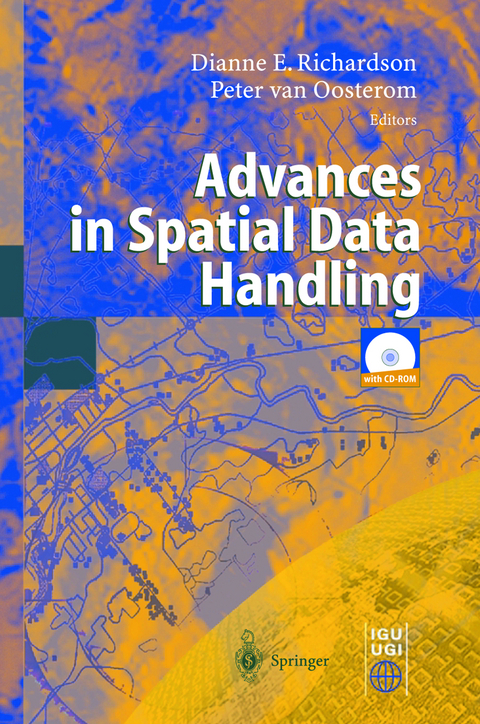
Advances in Spatial Data Handling
Springer Berlin (Verlag)
978-3-540-43802-1 (ISBN)
A Decision Tree for Multi-Layered Spatial Data.- Computational and Visual Support for Geographical Knowledge Construction: Filling in the Gaps Between Exploration and Explanation.- Polygonization of Point Clusters through Cluster Boundary Extraction for Geographical Data Mining.- The Impact of Filtering on Spatial Continuous Queries.- An Object Model for Geologic Map Information.- Indexing and Browsing Digital Maps with Intelligent Thumbnails.- Modelling and Manipulating Multiple Representations of Spatial Data.- Terrain Modelling Based on Contours and Slopes.- Siting Observers on Terrain.- An Agent-Based Framework for Polygonal Subdivision Generalisation.- Template Matching in Support of Generalisation of Rural Buildings.- Minimising Positional Errors in Line Simplification Using Adaptive Tolerance Values.- A New Merging Process for Data Integration Based on the Discrete Fréchet Distance.- Above-Ground Biomass Estimation of Successional and Mature Forests Using TM Images in the Amazon Basin.- Grid Computing for Real Time Distributed Collaborative Geoprocessing.- The Balance Between Geometry and Topology.- STOQL: An ODMG-Based Spatio-Temporal Object Model and Query Language.- A Semantics for Version Queries in GIS Databases.- A Differential Spatio-temporal Model: Primitives and Operators.- A QTM-based Algorithm for Generation of the Voronoi Diagram on a Sphere.- The Dimensional Model: A Framework to Distinguish Spatial Relationships.- A Quantitative Description of Spatial Configurations.- Implementing Topological Predicates for Complex Regions.- Route Specifications with a Linear Dual Graph.- Projecting a Regular Grid onto a Sphere or Ellipsoid.- Creating Spatial Information: Commissioning the UK Land Cover Map 2000.- A Methodology for Updating Geographic DatabasesUsing Map Versions.- Revealing Uncertainty in Maps of Glacial Lake Algonquin.- Spatio-Temporal Methods to Reduce Data Uncertainty in Restricted Movement on a Road Network.- Quantifying Uncertainty of Digital Elevation Models Derived from Topographic Maps.- Detecting Building Alignments for Generalisation Purposes.- Temporal GIS and Statistical Modelling of Personal Lifelines.- Urban Simulation Using Neural Networks and Cellular Automata for Land Use Planning.- Creation of the Anamorphoses-Based 3D-Pyramidal Block-Diagrams.- Schematic Networks: An Algorithm and its Implementation.- Developing Lightweight, Data-Driven Exploratory Geo-visualisation Tools for the Web.- GAP-Tree Extensions Based on Skeletons.- Improving Automated Generalisation for On-Demand Web Mapping by Multiscale Databases.- Map Samples to Help GI Users Specify their Needs.- Representation of Map Objects with Semi-Structured Data Models.
| Erscheint lt. Verlag | 8.7.2002 |
|---|---|
| Zusatzinfo | XII, 562 p. |
| Verlagsort | Berlin |
| Sprache | englisch |
| Maße | 155 x 235 mm |
| Gewicht | 980 g |
| Themenwelt | Informatik ► Theorie / Studium ► Algorithmen |
| Naturwissenschaften ► Geowissenschaften ► Geografie / Kartografie | |
| Schlagworte | Database • geographic data • geographic information systems • Geography • Geoinformationssysteme • Geomatics • GIS • Integration • Landscape Modelling • Landscape/Regional and Urban Planning • Remote Sensing |
| ISBN-10 | 3-540-43802-5 / 3540438025 |
| ISBN-13 | 978-3-540-43802-1 / 9783540438021 |
| Zustand | Neuware |
| Informationen gemäß Produktsicherheitsverordnung (GPSR) | |
| Haben Sie eine Frage zum Produkt? |
aus dem Bereich


